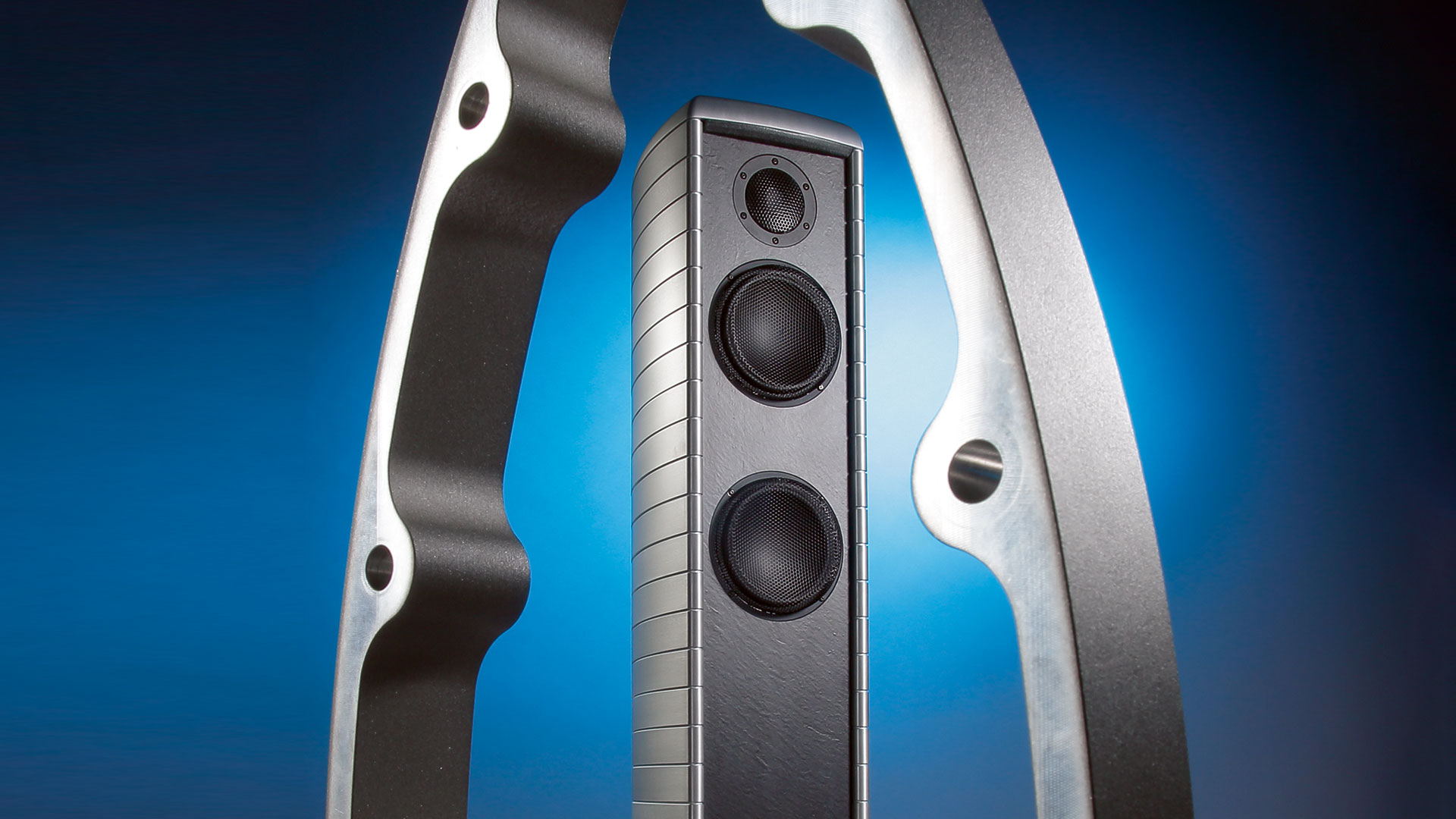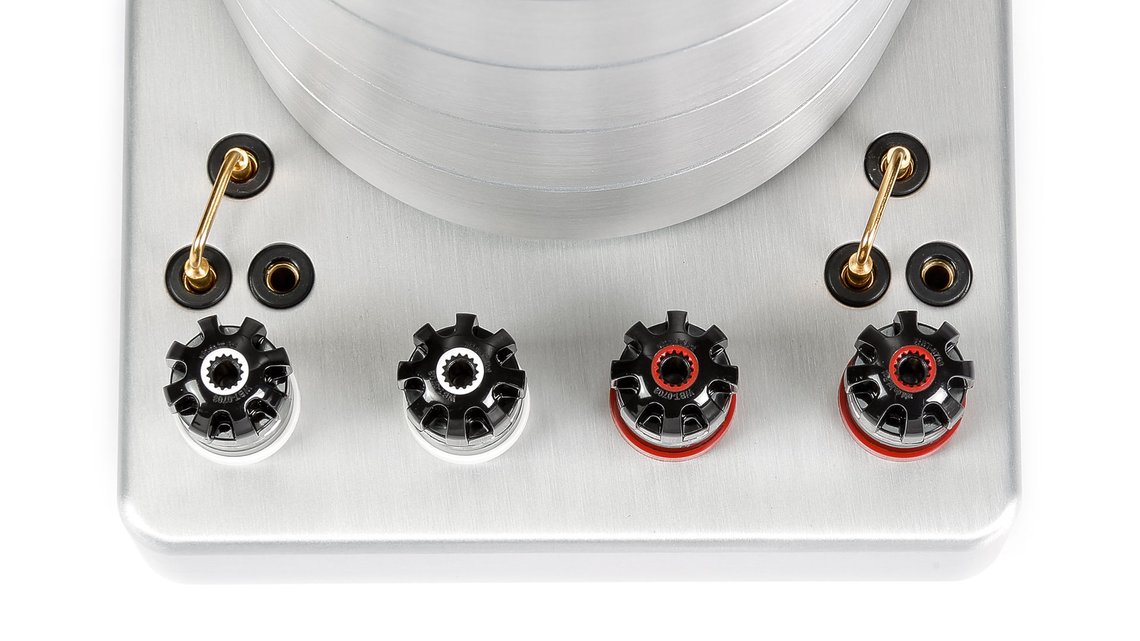Since the test of the DARC 100 about a year ago (test in STEREO Magazine 17), the sound of this exceptional loudspeaker has not gone out of my head. Its musical maturity and the unobtrusive yet all the more convincing reproduction of music were simply impossible to forget.

Floorstanding Speaker Test
Gauder Akustik DARC 60 Review
Gauder bridges the gap – In the world of hi-fi, innovations usually emerge with baby steps. However, with their DARC series, Gauder has launched a leap forward in innovation.
No longer out of reach
Due to its smaller brother 60, the entry ticket to the world of DARC technology is now considerably cheaper. By the way, the abbreviation stands for "Dynamic Aluminum Rib Construction" and is meant to hint at the special cabinet construction. In addition to the wealth of other design measures, this technology gives all models in the series excellent dynamic capabilities despite their comparatively compact dimensions. Many of the refined technical details found in the DARC 60 we already admired in the 100. The cabinet has the same width and depth, but was shrunk by 21 centimeters in height. One woofer as well as seven kilograms of weight have been left behind. From a technical perspective, the 60 is a 2 1/2 way speaker, in which one woofer works inside a sealed cabinet, while its bigger sibling works on a bass reflex port underneath it. Both bass drivers have an aluminum diaphragm that combines high stiffness with low weight. The tweeter comes from Accuton's ceramics department. For a surcharge of 8000 Euro per pair, the ceramic version can be switched for a diamond tweeter at any time.
One of Gauder's most important features is the strict selection of all drivers to an accuracy of 0.5 dB, which sets them positively apart from the majority, as selection costs time as well as money. Also the other ingredients of the entirely handmade in Swabia, Germany speakers are impressive: NextGen banana sockets from WBT, Mundorf coils and capacitors for the mid/high range and Clearwater silver cables for the internal wiring, as well as the symmetrical crossover technology with 60 dB slope, which Gauder regards as essential for the relaxed and homogeneous reproduction. The possibility of adjusting bass and treble in three stages by means of plug-in contacts as well as, concealed on the underside, another option called "Bass Extension", are also great features. Latter extends the low bass range but also demands a significantly higher current delivery from the amplifier. We decided against the low bass extension in favor of a crisper, faster, more dynamic sound image and a better transparency down to the mid frequency range. If you want to improve the sound of the DARC 60, you should rather consider the "Double Vision" edition, which is now available and offers even better crossover components and terminals.
Spectacularly inconspicuous
Looking at the DARC for a while, you'll notice that you've probably never before been so unobtrusively overwhelmed with musically significant details. The loudspeaker plays incredibly gently, distortion-free, neutral and three-dimensionally in all frequency ranges that it is an utter pleasure to catch yourself again and again turning the volume control a little further to the right. Notwithstanding the fact that already at moderate levels it created a full and pleasant sound image in the room. With Roger Waters' "Radio KAOS", for example, the DARC seemed to have entirely disappeared acoustically. Only the seemingly out of nowhere coming sound waves remain. When Martha Argerich, just 27 years old in 1968, played Chopin's Piano Concerto No. 1 under the reign of Claudio Abbado, the initial transverse flutes, clarinets and oboes where graceful, while the tension and drama inherent to this piece where immensely convincing with the Gauder. Argerich was enabled to unleash her art – this unique mix of technical competence and sheer exuberant feeling – without any constrains. A pleasure!
A leap to Kraftwerk from Düsseldorf, Germany: in the classic "Autobahn" the low synth tones merge into a perfect unity with the melody. They carry and support it, with nothing ever being hidden or smeared. This ability to always make the right decision in service of the music is an outstanding quality of this loudspeaker and makes the price appear absolutely appropriate.
Verdict: Gauder Akustik DARC 60
The entry into DARC technology scores high in terms of sound as well as quality of workmanship. The DARC 60's 2.5-way ported system draws you into the music with a similar magic as its big sister, the DARC 100, but is considerably more affordable in price.
Technical Details: Gauder Akustik DARC 60
Floorstanding speakers (passive)
Gauder Akustik DARC 60
Price: from 22000 € (Last check: 25.04.2022)
Dimensions WxHxD: 26 x 107 x 42 cm
Warranty: 10 years
Manufacturer: Gauder Akustik
General Data
Measurement Values
| Rated impedance at DC: | 8 Ohm |
| Minimum impedance: | 5 Ohm |
| Minimum impedance at: | 140 Hz |
| Maximum impedance: | 12 Ohm |
| Maximum impedance at: | 63 Hz |
| Sound pressure characteristic (2.83 V/m): | 87 dBSPL |
| Power for 94 dBSPL: | 5.4 W |
| Lower cut-off frequency (-3dBSPL): | 29 Hz |
| Distortion factor at 63/3k/10k Hz: | 0.3/ 0.1/ 0.1 % |
Stereo Test
Sound Level Floorstanding speaker: 95%
Price/Performance
Lab Comment: Gauder Akustik DARC 60
Frequency response somewhat unsteady, but largely balanced. Very even radiation pattern, angling hardly necessary. Extremely low distortion, still good step response; efficiency and impedance curve not critical.
Features: Gauder Akustik DARC 60
Aluminum cabinet in layered construction, ceramic chassis in the high-frequency range, aluminum chassis in the mid-frequency and bass range; height-adjustable spikes, adjustment for bass extension and level adjustment for bass and treble by +/- 1.5 dB; bi-wiring terminal
Test Devices
Turntable: Transrotor Rondino; Music Hall MMF9.3; Pro-Ject ATR Celebration 40 Super Pack 1
Phono preamplifier: Pro-Ject Tube Box DS2
Integrated amplifier: Audia Flight FLS 10; Audionet SAM
Loudspeaker: DALI Epicon 6
Cable: Audioquest; In-Ak
 MAGAZINE
MAGAZINE